Travel: Valley of the Kings/Queens. Luxor, Egypt. Jan 27/2023
- Lili Naveh
- Jan 27, 2023
- 14 min read
Continuation of a trip which started on :
Jan. 23 (part 1)
Jan. 24 (part 2)
Jan. 25 (part 3)
Jan, 26 (part 4)

For "mysterious" reasons, it took our Golden Age group, much longer to get organized this early morning, after half of it went up on an air- balloon, over the "Valley of the Kings" .( I passed)
Thus,the bus finally departed from the Stienberger Resort Achti Luxor,an half an hour later then planned
Crossing from the Nile's East bank into the "City of the Dead" on the West bank.

Crossing the Only Bridge in Luxor
The Luxor bridge, the only obe over the Nile was opened in 1998 and made it possible to cross the Nile river without using a ferry.
Riding the bus over the bridge took much longer then Yesterday's Nile crossing by boat

The Bus ride proceeded among neat patches of green cultivated fields, clusters of palm trees. donkey's carts loaded with sugarcane, and depleted farm houses all kept alive by the Nile diverted water, flowing through the men made canals, and which facilitates the yellow desert landscape so verdant lush.
Although we arrived relatively early that morning to the touring site, the valley was already mobbed with many visitors and parked busses,
Valley of the Kings

The principal burial place from the 16th to 11th century BC, of the major royal figures of the Egyptian New Kingdom, as well as a number of favorite and privileged nobles as well as the wives and children of both nobles and pharaohs.


On the West bank of the Nile opposite ancient Thebes and now modern Luxor, the desolate dry river wadi /valley consists of 2 valleys: within the heart of the Theban Necropolis, where the majority of the royal tombs are situated ,

Situated over 1,000 feet of limestone and other sedimentary rock, it is formed of the cliffs interspersed with soft layers of marl. The sedimentary rock was originally deposited between 35 and 56 million years ago during a time when the Mediterranean Sea sometimes extended as far south as Aswan
The Valley was used for primary burials from approximately 1539 BC to 1075 BC. It contains at least 63 tombs, beginning with Thutmose I (or possibly earlier, during the reign of Amenhotep I) and ending with Ramesses X or XI, although non-royal burials continued in usurped tombs.
Electric cars transport the visitors from the site's entrance gate to the upper hill

For a period of nearly 500 years rock-cut tombs were excavated for the pharaohs and powerful nobles of the New Kingdom -the Eighteenth to the Twentieth Dynasties , and were archeologically explored since the end of the 18thc
Almost all of the tombs seem to have been opened and robbed in antiquity, but they still give an idea of the opulence and power of the pharaohs.
The valleys of the royal tombs and chambers are,decorated with scenes from Egyptian mythology which reveals the beliefs and funerary practices of the period.
Since the 1920s, the valley has been famous for the discovery of the tomb of Tutankhamun, and is one of the most famous archaeological sites in the world.
it became a World Heritage Site, in 1979 along with the rest of the Theban Necropolis.[
Exploration, excavation and conservation continues in the valley, and a new tourist center has recently been opened.

The Tomb of Ramesses IV - KV2, After a short reign of about six and a half years, Ramesses IV died in 1150 BC and was buried in tomb KV2 in the Valley of the Kings His mummy was found in the royal cache of Amenhotep II's tomb KV35 in 1898.
The tomb of Ramses IV was firstly discovered by Edward Ayrton between 1905 and 1906, and then it was excavated again in 1920
The tomb has been open since antiquity and contains a large amount of graffiti.
This tomb also contains around 50 or so examples of Coptic graffiti, mostly sketched onto the right wall by the entrance way,

Usermaatre Heqamaatre Setepenamun
the full name of Ramesses IV, was
the third pharaoh of the Twentieth Dynasty (the 2nd son of Ramesses III to mother most likely Queen Tyti) who became crown prince, as his father's chosen successor, when his elder brother Amenherkhepshef died aged 15 in 1164 BC, when Ramesses was only 12 years
His rule has been dated from reigned to 1155 to 1149 BC.
Wife Queen Duatentopet

Ramesses IV came to the throne in difficult circumstances. surviving the harem conspiracy, as his father Ramesses III, was assassinated by conspirators led by Tiye, a secondary wive, to establish Pentawer, her own son and Ramesses IV's half-brother, on the throne.[ Ramesses IV, however, was able to secure himself on the throne, and had the conspirators arrested and executed.
He strove through extensive building activity to maintain Egypt’s prosperity in an era of deteriorating internal and external conditions.
His chief wife is Queen Duatentopet or Tentopet or Male who was buried in QV74. His son, Ramesses V, would succeed him to the throne

The tomb is mostly intact, is laid out along a straight axis consisting of three slowly descending corridors. This is followed by an enlarged chamber, and then the burial chamber. Past the burial chamber lies a narrow corridor, flanked by three side chambers, decorated with scenes from the Litany of Ra,
Religious/Mythological Funerary texts/Graffiti depictions for the benefit of the deceased to help the spirit be preserved in the afterlife., from Book of Caverns,
Book of the Dead, Book of Amduat and the Book of the Heavens are on wall display


A pillared hall was converted to be the burial chamber. The sarcophagus is in place with a magnificent goddess Nut filling the ceiling above it.



The Tomb of TutAnakhAmun - KV62,
The burial place of Tutankhamun , a pharaoh of the Eighteenth Dynasty during the New Kingdom who reigned only 9 yrars in . 1334–1325 BC
Tutankhamun's tomb was discovered in a near-intact condition in 1922 .

Excavators were led by Howard Carter. and widely considered as one of the greatest archaeological discoveries of all time, thanks to which this king became one of the best-known pharaohs. Some artefacts from his tomb, such as his golden funerary mask, are among the best-known artworks from ancient Egypt. and their discovery attracted a media frenzy and became the most famous find in the history of Egyptology.

Tutankhamun the Pharoh
This young king ascended to the throne around the age of nine and reigned until his death around the age of nineteen. taking the throne under the unprecedented viziership of his eventual successor, Ay, to whom he may have been related
He took the throne after the death of his Akhenaten the father had radically reshaped ancient Egyptian religion by worshipping a single deity, Aten rejecting other deities, a shift that began the Amarna Period
Aten -Sun God Amun Tut led by Anabis gets life from Hathor
Tutankhamun is primarily known for restoring the traditional polytheistic ancient Egyptian religion, and religious practice that were suppressed. by Akhenaten in favor of the Atenist religion, changing also his name from Tutankhaten, referring to Akhenaten's deity, to Tutankhamun, honouring Amun, one of the foremost deities of the traditional pantheon. Similarly, his queen's name was changed from Ankhesenpaaten to Ankhesenamun, He was also one of few kings worshipped as a deity during his lifetime; a practice which was usually done posthumously for most pharaohs.
Ay, Tutankhamun's advisor. became pharaoh on Tutankhamun's death
The tomb consists of four chambers and an entrance staircase and corridor.
The tomb's low position, dug into the floor of the valley, allowed its entrance to be hidden by debris deposited by flooding and tomb construction.
Thus, unlike other tombs in the valley, it was not stripped of its valuables during the Third Intermediate Period (c. 1070 – 664 BC
It is smaller and less extensively decorated than other Egyptian royal tombs of its time, and it was probably originated as a tomb for a non-royal individual that was adapted for Tutankhamun's use after his premature death.

He was buried with a wide variety of funerary objects and personal possessions, over 5,000 artifacts, most of which were housed at the Egyptian Museum in Cairo and in the Grand Egyptian Museum in Giza, such as coffins, furniture, clothing and jewellery, that were densely packed.in the unusually limited space.
Robbers entered the tomb twice in the years immediately following the burial, but Tutankhamun's mummy and most of the burial goods remained intact. Tutankhamun's mummy and sarcophagus are still on display in the tomb.
The discovery provided insights into the material culture of wealthy ancient Egyptians, but limited evidence about the history of Tutankhamun's reign, some about the Amarna Period that preceded, as well as on patterns of ancient tomb robbery..
The Tomb of Ramesses III - KV11

This is the king whom I wrote about - the second Pharaoh of the 20 Dynasty (20 Dynasty (1189 - 1077 BC) and at which the grand temple he built, we visited the previous day (Jan 26/2023).
It is one of the largest tombs


The tomb has been open since antiquity, and has been known variously as "Bruce's Tomb" (named after James Bruce who entered the tomb in 1768) and the "Harper's Tomb" thanks to paintings of two blind harpers (harp playing) in the tomb.



Decorations include colorful painted sunken reliefs featuring the traditional ritual texts. The corridors are decorated with the Litany of Re. with the Book of Gates and the Book of Amduat, and leads over a ritual shaft, and then into a four-pillared hall. (more)
The hall is again decorated with the Book of Gates. and with scenes of the opening of the mouth ceremony leads into a vestibule, with scenes of the Book of the Dead, and then into the burial chamber proper.
Spells from the Book of the Dead. monsters and deities of the underworld
The pharaoh is welcomed to the afterlife by the falcon-headed god Horus.

Anobis- and Horus - mummifying Gods

The secular scenes, in the small side rooms of the entrance corridor, dispaly foreign tributes, such as highly detailed pottery imported from the Aegean, the royal armoury, boats and, in the last of these side chambers, the blind harpists.
The burial chamber is an eight-pillared hall in which stood the red quartzitesarcophagus This chamber is decorated with Book of Gates, divine scenes and the Book of the Earth
Ramses III’s sarcophagus is in the Louvre in Paris, its detailed lid is in the Fitzwilliam Museum in Cambridge and his mummy – found in the Deir Al Bahri cache – is now in Cairo’s Egyptian Museum. It was the model for Boris Karloff’s character in the 1930s film The Mummy.
Osiris hands the ruling items to Pharoh


Tomb of Ramesses VI -KV9
first discovered in 1898

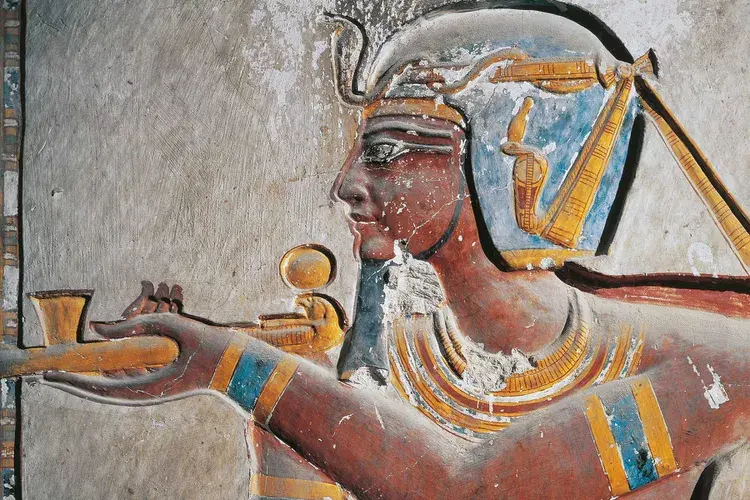
Dating back to the twentieth dynasty, pharaoh’s ramses VI tomb (KV9) was initially built by king Ramesses V (.1147–1143 BC) and later on taken over by his uncle Ramesses VI. (1143–1136 BC)

The huts of the workmen who built this tomb were built directly on top of the ground that concealed the staircase that led into the tomb of Tutankhamun. In other words, it is this tomb that led to the discovery of Tutankhamun’s in 1922 with all of its world-famous treasures inside it.
The tomb features some of the most well-preserved wall reliefs and decorations. funerary texts, like the book of gates, the book of caverns, the amduat, and the book of the dead are there to help the king in his journey into the afterlife.

exquisite ceiling decorations which include astronomical scenes. the ceilings on the burial chamber have been dedicated to nut, the goddess of the sky and heavens, where she is depicted about to swallow a sun disk, representing the sunset. other sun disks dance around nut’s body, depicting the suns movement, from day to night, and showing how the mortal king could achieve a glorious rebirth in the eastern horizon at dawn.
Tomb of Ramesses IX -KV6

A rather simplistic tomb which has stood open since antiquity.
and dozens of inscriptions in the tomb were left by ancient visitors.


Neferkare Setepenre Ramesses iX ruled 1129–1111 BC and was the eighth pharaoh of the Twentieth Dynasty in the New Kingdom. He was the third longest serving king of this Dynasty after Ramesses III and Ramesses XI., According to Papyrus Turin 1932+1939, Ramesses IX he enjoyed a reign of 18 years and 4 months and died in his 19th Year . He re-established stability in the country after the chaotic period following the death of Ramses VI
He is believed to be the son of Mentuherkhepeshef, a son of Ramesses III, since Mentuherkhopshef's wife, the lady Takhat bears the prominent title of King's Mother on the walls of tomb KV10, which she usurped and reused in the late 20th Dynasty;
The body of Ramesses IX was found in the Deir el-Bahri cache in 1881, in a coffin originally prepared for the lady Neskhons, wife of Pinudjem II.

The decorative theme for this tomb begins with the king's adoration of the sun disk, accompanied by Isis and Nephthys on the lintel over the entrance.

The burial chamber has a vaulted ceiling with a double representation of Nut and passages from the Book of the Day and the Book of the Night.
Again the decorations are Litanies of Re, there are also passages from the Book of the Dead, the Book of Caverns, and in the last part, the Book of Amduat
There is little in the way of funerary equipment which Henry Salt, collected is now in his collection at the British Museum. In 1888, the sepulchre was cleared by George Daressy.
The Temple of Hatshpsut - the She Pharoh King "Foremost of Noble Ladies"
A mortuary Temple of Deir el Bahri, from over 3000 years old, of several floors with columns in front, where Hatshapsut - great She -King was buried.

Hatshepsut was usually carved or drawn as a man, complete with muscles and a beard, as was the artistic tradition for pharaohs
Hatshapsut (1507–1458 BC)
Was the fifth pharaoh of the Eighteenth Dynasty of Egypt.
Born when her father, King Thutmose I, died without sons, Hatshepsut married her half-brother, Thutmose II, to help him become pharaoh. When he died, his son—Hatshepsut’s stepson—became pharaoh, even though he was just 3 years old. Hatshepsut ruled in his name, but he was still considered the only pharaoh.
When the warier king - Thutmose III was about 8 years old, she took the throne herself and officially became his co-ruler around 1473 B.C. S Hatshepsut and Thutmose III would rule together as pharaohs for the next 22 years
Considered one of Egypt’s greatest pharaohs—man or woman—Hatshepsut brought great wealth and artistry via diplomatic and economic ties (not war) to her land.. She sponsored one of Egypt’s most successful trading expeditions, bringing back gold, ebony, and incense from a place called Punt (probably modern-day Eritrea, a country in Africa). She left an amazing legacy by constructing structures/temples as well as two hundred-foot-tall obelisks, some still standing at the great temple complex at Karnak. -one is still intact) And she built
After her death, she was not mentioned in official accounts of Egyptian historiography by her successors, possibly due to sibling rivalry, political expediency, or due to her gender.
When she died i, Egypt would not see as powerful a female ruler for another 1,400 years, when Cleopatra came to the throne.
The Mortuary Temple Structure - a masterpiece of ancient architecture (Tomb KV20)
Construction of the 3 massive terraces that rise above the desert floor and into the cliffs of Deir el-Bahar , took place between Hatshepsut's seventh and twentieth regnal year, during which building plans were repeatedly modified. In its design.
Nearly the whole temple was built of limestone, with some red granite and sandstone

Temple plan: 1) entrance gate; 2) lower terrace; 3) lower porticoes; 4) ramps; 5) middle terrace; 6) middle porticoes; 7) north portico; 8) Hathor shrine; 9) Anubis shrine; 10) upper terrace; 11) festival courtyard; 12) Amun shrine; 13) solar cult court; and 14) mortuary cult complex.
The very contemporary looking temple consists of three levels each of which has a colonnade at its far end. On the uppermost level, an open courtyard lies just beyond the portico.
Mummiform statues of Hatshepsut as Osiris, the god of the dead, lean against its pillars.- in par with Djeser-djeseru is Hatshepsut’s mortuary temple, where her cult was practiced after her death, when she attained the blessed state of Osiris.
The temple most likely was designed by architect - Senenmut. the chief steward of Amun, or by Hapuseneb, the High Priest,
Senenmut, the Overseer of Works, (and possibly also the Hatshapsut's lover)
It is also likely that Hatshepsut provided input to the project. Over the course of its construction, between the seventh and twentieth year of Hatshepsut's reign, the temple plan underwent several revisions
The side room with the Alter
It was heavily influenced by the Temple of Mentuhotep II of the Eleventh Dynasty built six centuries earlier, in the arrangement of its chambers and sanctuaries, though, her temple is wholly unique. The main axis, normally reserved for the mortuary complex, is occupied instead by the sanctuary of the barque of Amun-Re, with the mortuary cult being displaced south to form the auxiliary axis with the solar cult complex to the north.
Punt housing huts and palms A sphinx at the entry Upper &Lower tie knote rule
Separated from the main sanctuary are shrines to Hathor and Anubis which lie on the middle terrace. Hatshapsut appears as the Goddess - a woman face with cow horns.
The temple’s walls are covered with beautiful painted reliefs depicting temple rituals, religious festivals, and even the transportation of obelisks from the quarry to their destination in Karnak Temple

The porticoes that front the terrace host the most notable reliefs of the temple., hose of the expedition to the Land of Punt and of the divine birth of Hatshepsut, rightfully occupy the throne as a member of the royal family and as godly progeny.
The lowest terrace leads to the causeway and out to the valley temple.
A coffee Break at the Tempe's site's location
Back to the Bus Police Security View from the Temple Mount
Lunch at Al Amina by the Nile
An indoor /outdoor large eating place on the Nile, both self served buffet and ala-cart Though the day's weather and views of the Nile were beautiful the group was sited in doors, for a very mediocre "kibbutz style" buffet lunch, which was disappointing.
Valley of the Queens

known then as Ta-Set-Neferu, meaning "the place of beauty site ", Valley of the Queens, at the southern end of the Theban hillside, was the official burial site of many wives of pharaohs as well as other Ramesside princes.
The main wadi contains 91 rock cut tombs. (each contains long corridors that leads to main burial chamber and smaller side chambers. tombs) of which at least 75 tombs belonged to queens of the 19th and 20th dynasties, and in the subsidiary valleys, The burials in the subsidiary valleys all date to the 18th Dynasty. 4 of the tombs are open for viewing.
The most famous of these tombs, and the only one we visited, is the tomb of Nefertari, which was only reopened to the public in late 2016.
The other tombs are those of Titi, Khaemwaset and Amunherkhepshef.



The existence of a sacred grotto dedicated to Goddess Hathor at the entrance of the Valley. may have been associated with rejuvenation of the dead, and may have also been the reason to the location of this valley burial site
Often depicted as a cow, symbolizing her maternal and celestial aspect, her most common form was a woman wearing a headdress of cow horns and a sun disk. She could also be represented as a lioness, a cobra, or a sycamore tree.
As a sky deity, Hathor was the mother or consort of the sky god Horus and the sun godRa, both of whom were connected with kingship, and thus she was the symbolic mother of their earthly representatives, the pharaoh Her beneficent side represented music, dance, joy, love, sexuality, and maternal care,
Hathor crossed boundaries between worlds, helping deceased souls in the transition to the afterlife.
Tomb of Nefratari - QV66

A visit to the tomb of Nefreatari was an elective for only those group members who were willing to pay the extra 50$ in addition to the general admission fee, charged from all entering the site,
However the exquisite, well preserved colorful paintings and hieroglyphic texts covering the wall and a starry-decorated ceilings. ,at one of the most astonishing and popular tombs, definitely worth this extra entry fee,

Queen Nefertari (1290–1224 BC)
known as Nefertari Meritmut was he beloved wife queen of the great pharaoh Ramesses the Great.. one of the best known Egyptian queens, among such women as Cleopatra, Nefertiti, and Hatshepsut,
Nefertari was highly educated and able to both read and write hieroglyphs, a very rare skill at the time, and used these skills in her diplomatic work, corresponding with other prominent royals of the time.


Ramesses II didn't save on this one of the largest and most spectacular tombs in the valley, as he also. constructed a temple for her at Abu Simbel next to his colossal monument there., that carries out her name queen "Nefertari temple"

Tomb of Nefratari
The amazing depictions and reliefs, shed light on ancient Egyptian beliefs, and showing many pictures of Nefertari the Queen with Gods, associated with texts from the Book of the Dead.
They shows queen Nefretari, the ruler of the double land Egypt, gives offerings to the god Osiris, on top on the entrance wall, he goddess Maat (god of truth and cosmic) stretching her wings to provide protection to the queen's tomb.







Images of cattle appear frequently in the artwork of Predynastic Egypt (before c. 3100 BC), as do images of women with upraised, curved arms, reminiscent of the shape of bovine horns.
Cows are venerated in many cultures, including ancient Egypt, as symbols of motherhood and nourishment, because they care for their calves and provide humans with milk

Late afternoon the Dead City's desolate exterior but so colorful full of interior lively art life, was left underground and behind, for a 3 hours drive North /West
The desert drive from Luxor, following the Niles curving, would bring us for a visit of some more special temples in the peripheral towns of Avydos and Dendera

Hotel at Avidos - House of Life
Hotel, health & healing center lies at walking distance of the Temple of Sety I,
PS. Today it was revealed, that our very sympathetic and patient Israeli guide - Zvi, has not guided groups nor visited Egypt (but the one just before us,) since the 1980th Honestly, he has been trying doing his best under the circumstances he was thrown Into, and has managed to handle this quite unruly and a bit health challenged Golden age group, heroically.
To be Continued....










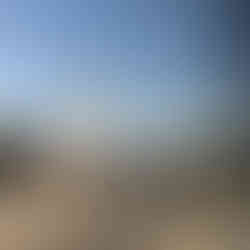
























































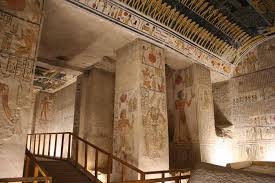





































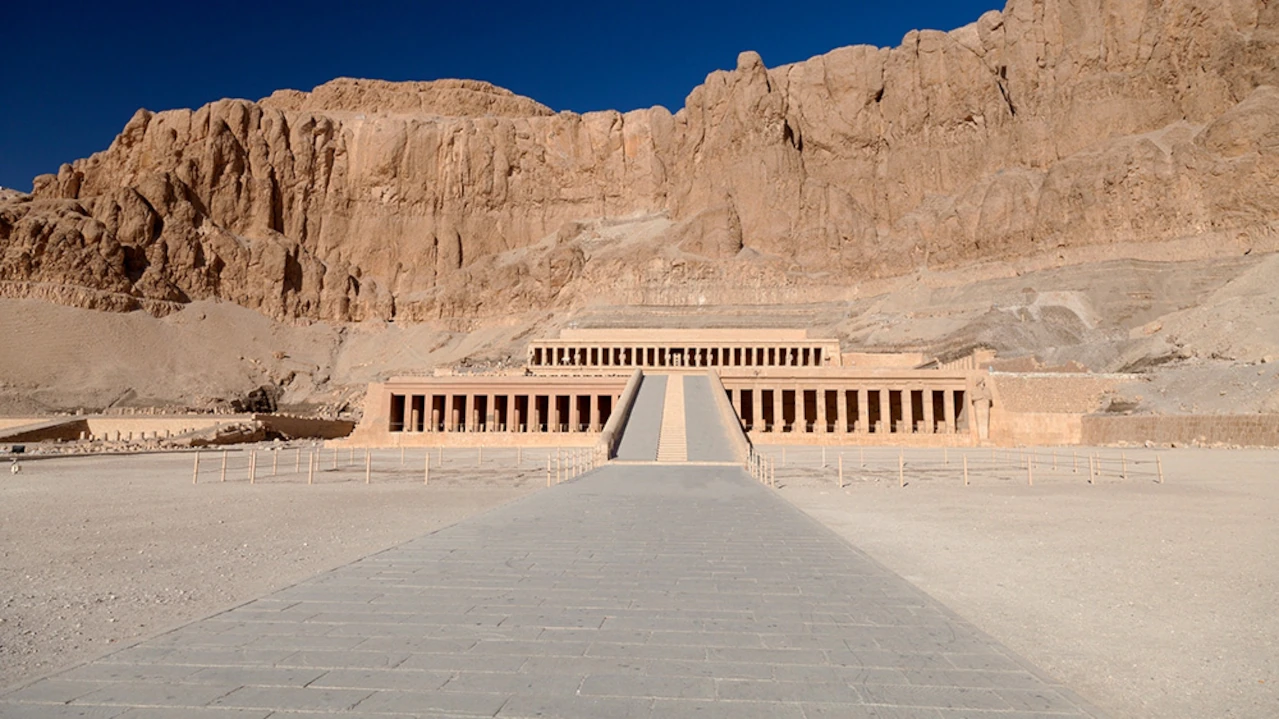



































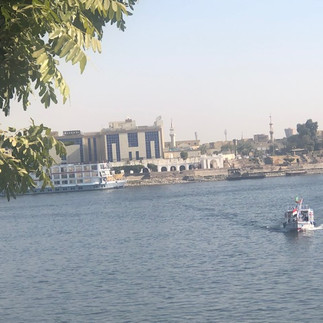



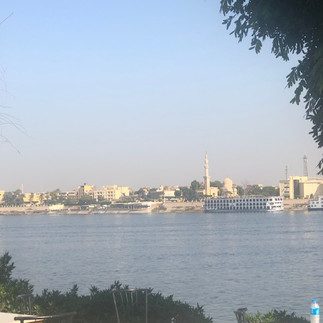





















Comments